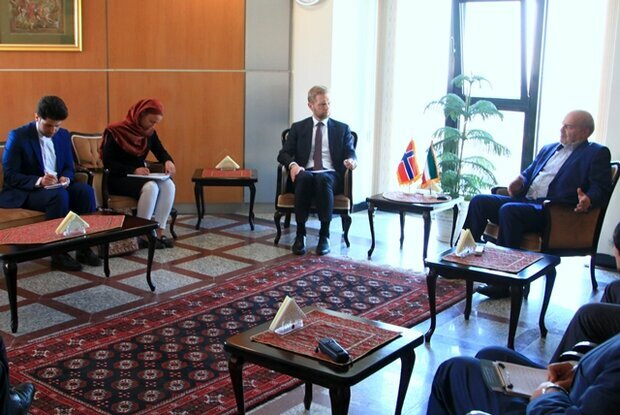Iran, Norway to enhance co-op in environmental issues

TEHRAN – Iran’s Department of Environment (DOE) chief, Issa Kalantari, and Norway’s ambassador to Iran, Lars Nordum, discussed increased cooperation on environmental issues during a meeting held on Monday.
During the meeting, the two officials addressed environmental issues facing the world, including, water and air pollution, plastic waste and other major issues, Mehr news agency reported on Tuesday.
Kalantari for his part said that currently some 12 percent of the country’s total land area is defined as the protected areas and natural habitats.
In the past, some construction projects have been carried out without precise environmental impact assessment, which led to polluting industries, however, we tried to stop those polluting industries and stick to sustainable development policies.
The most important environmental issue in the country is air pollution, which is mostly caused by non-standard fuel and clunker vehicles, whereas, we took measures to scrap emitting vehicles, so air pollution has reduced since last year.
Car industry still needs improvements and so oil products to solve the problem, he further added.
Kalantari went on to say that environment knows no border, in the other word, there is no difference that which country is more polluting; the whole world is affected.
Criticizing the sanctions imposed on Iran, he noted that we are limited to use technology advances to contain environmental issues, so it affects not only Iran, but the world.
Elsewhere in his remarks, he stated that high water consumption is another major issue in the country, therefore, 90 percent of the renewable water resources have been withdrawn, although, 40 percent of which must have been used.
We took steps toward reducing water consumption, whether in agricultural or industrial sector, to make the country's water system sustainable, he added.
However, international attempts must be taken in this regard, for instance, Afghanistan has denied a fairly formal agreement on granting the water right of Hamoun wetland amounting to 820 million cubic meters, and grants only 5 million cubic meters.
The Hamouns are transboundary wetlands on the Iran-Afghan border made up of three lakes: Hamoun-e Helmand, which is entirely in Iran, Hamoun-e Sabari on the border, and Hamoun-e Puzak, almost entirely inside Afghanistan. The three lakes are linked and fed by water from the Helmand River which starts in the Hindu Kush Mountains in Afghanistan.
Referring to pollution in Persian Gulf, he said that the corals have been disappeared due to pollution caused by oil export, we tried to minimize pollution, although our new oil fleet is new, but ships that export oil to the Persian Gulf are over 30 years old.
Nordum for his part expressed happiness for enhanced cooperation on environmental issues and said that our main concern is climate change and plastic pollution in the oceans.
Norway will cooperate with Iran to access technological advances in the environmental field, regardless of sanctions, he concluded.
FB/MG
Leave a Comment